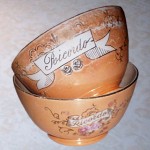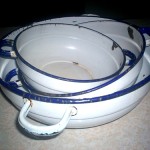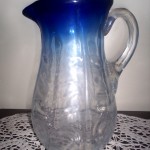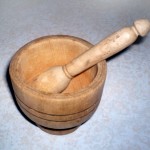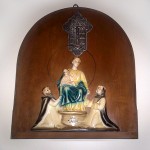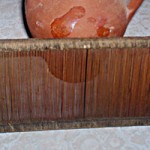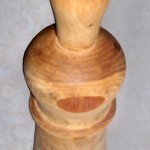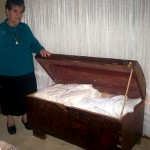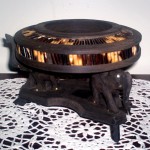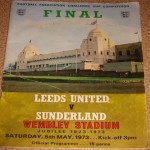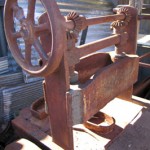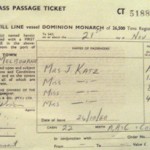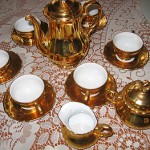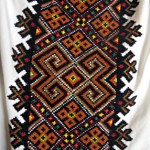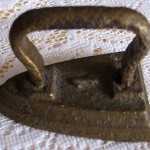Italian
San Ferdinando, Reggio Calabria, Italy
Messina, Sicily, Italy on 25 August 1952
Melbourne on 28 September 1952
My husband had rented a farm property on Toorak Road, Leeton, Riverina, New South Wales.
Helping on family farm.
I am from San Ferdinando, Reggio Calabria, Italy. I left from Messina [in Sicily, Italy] on the Napoli on the 25th August and arrived in Melbourne on Sunday 28th September 1952.
My daughters Teresa (six years) and Tonetta (two-and-a-half) came with me and my brother Domenico. He was 22. I came to meet my husband who had been in Australia for three years. I was pregnant with Tonetta when my husband left and they had not met until we arrived in Melbourne. Tonetta had the most beautiful curls and everyone in Italy wanted a piece of her hair to keep but she would say, “No, my father has to see my curls, he hasn’t seen them yet, so leave them alone”.
The ladies from the neighbourhood came to help me pack. The old ones would say, “They don’t have this in Australia so take this with you”. I packed three trunks plus suitcases to bring with us. I had walnut veneer trunks: two I still keep in my bedroom and use to store my extra blankets and the other I keep in the shed. My mother and father had them made for me when I married. The trunks have cracked with the heat over the years but I still use them. I tried to get as much in them as possible when I came to Australia. I packed our clothes, saucepans, glasses, cups, the sculla pasta (colander). The zuppa (soup) bowls [once] were a set of six. I have only two left now but I used them at breakfast time every morning. I would put bread in the bowl, soak the bread with hot milk and a little bit of coffee and sugar. This was the children’s breakfast. The word on the front ‘Ricordo’ means ‘Remember’.
I have used these enamel mixing bowls for everything: making dough for pasta and breads, cakes. As you can see they are well used and I always said when they get a hole in them I will throw them away but they still haven’t.
The wooden weaving frame I first used for weaving but when it got old I used it to make biscuits and macaroni pasta. The biscuits like nacatoli were cut into strips and then wrapped around the frame to make a pattern and then slipped off and fried. The strings inside the frame would give a pattern to the strips of pasta to make patterned macaroni.
The wooden mortar and pestle I used to grind peppercorn and dried chillies. It was Tonetta’s job to grind the peppercorns in this. The wooden bottle stopper was useful. I used to put a cork inside the bottom of the stopper and push the handle down. It would push the cork into the bottle and seal it.
In 1937 the blue water jug was given to me by my mother-in-law who was about to leave for Australia. It was [originally] a present from America by her mother. I brought it to Australia; it is very light and easy to lift.
When I married I bought this Holy Family plaque to put above our bed. I have [also] kept it above my bed since I came to Australia.
I probably would not have brought so much but the older relatives would say “take this” and “take that”, so I bought anything that would fit. I remember one of the neighbours came back to Italy from Leeton and she said to me, “Where are you going? You will cry when you see”.
The trip on the ship I spent being sick, I was no good for anything and the girls were throwing up with me. We were in a tiny cabin and Teresa fell over and hit her head on the basin. We shared the cabin with another lady and her child so it was very cramped. My brother was in a room with the men. We didn’t go anywhere on the ship, others would go to the lounge and dance but we didn’t. Domenico had bought the elephant ornament when he got off the ship at Bombay. I have lost the piece that sat in the top. The sides are made of bamboo sticks with the beautiful elephants to hold it up. I didn’t get off the ship at the different ports but my brother did and sometimes the local sellers would come on the boat to sell things.
When we arrived in Melbourne my husband was there to meet us. We all had to stay two nights in Melbourne because it was a long weekend and we were not able to get our luggage off the ship and through Customs until Tuesday. We stayed at a hotel called 100 Rooms, which was near the Victoria Markets, right near the port. I was so weak from the voyage I don’t remember much but I do remember going out for something to eat. The men wanted to eat rabbit. Their English was not good so they made the shape of rabbit ears to the restaurant owner. We were all laughing! I don’t know if they got any to eat though.
We caught the night train to Leeton. When we arrived at Narrandera we had to change trains to get to Leeton. When we arrived we went to my mother-in-law’s house in Corbie Hill, seven kilometres from Leeton, for a meal. After our meal we went to the house that my husband had rented for us on Toorak Road.
My husband tried to make sure that we would be comfortable in our new home. He had bought single beds for the girls. He went with Zia (Aunty) Lisa Lucchese and bought a new bedroom suite for us from Wagga Wagga which was an hour-and-a-half from Leeton. It cost him £170; the bed head, the wardrobes and dressing table. I didn’t like the furniture at all but there was no way I could change it and we still have the same furniture today. No-one had new furniture in those days. I remember Caterina Pantano said to me, “Rosina, thank God that you have this lovely furniture. When I came I had nothing and I wanted to run away. At least you have a house with furniture”. Caterina came here when she was seventeen in 1937.
My husband told me he had found us a house on a farm with a tap, which turned out to be a tap at the front of the house that brought channel water to [it]. My brother Domenico came to live with us and he had a closed-in room on the veranda.
The next morning all I did was cry. I wanted to go back to Italy. Zia Lisa came to help me unpack and get settled in. I spent the next two years crying. I found it difficult, I didn’t have any family or friends here and I was lonely. In Italy you had someone right next door. I kept saying I wanted to go home. I felt isolated and scared that if anything happened to me on the farm, no-one would hear me call for help. The men would leave to work in the farm and not come in until lunchtime.
Everything we did was outside. We washed the clothes outside, the toilet was a tin outside and I would boil water in a four-gallon tin on a wood fire outside. Everyone who came at that time didn’t have much, like we didn’t have much in Italy, but I had my language and I could understand, but here in Australia I could not understand anything.
On the farm we grew what we could – like tomatoes, peas – for the local Letona Cannery and the markets in Sydney. My husband would also put all the vegetables and fruit on the truck and would go to the little towns like Temora (which was two hours away) around Leeton and sell what he could.
We had Italian men from Narrandera (20 kilometres away) and Griffith (50 kilometres away) with grocery trucks. They would come to the farm so we could buy things direct from them, once a week or once a fortnight. There were a lot of Italians along Toorak Road. Our neighbours were Pasquale Tripodi and the Brunos. They would come to all of us and bring what we needed. I was even able to put in an order if I wanted something special. I remember buying the ceramic jars that I use to preserve olives from them. I remember Mr Miranda, I was able to buy a lot of the groceries that I needed like pasta in boxes [that weighed] five pounds [each].
We stayed six years at that house and in June 1958 we bought our own farm in Wamoon, which is a village eight kilometres out of Leeton. We had citrus, apples, grapes and vegetables on it. Before we were able to buy the farm we had to become Australian citizens. By that time I had [more] children: Rocco in 1953, Anna in 1954 and Angelo 1957 and Minnie came after in 1961. When we moved there only half a house was finished, so when we could afford it we would complete a bit more. But at least this house had hot, running water and a bathroom inside with a bath and shower. I was very grateful for that with our six children.
During the day I would help pick the grapes and pack them at night. I would get Teresa to help in the house and look after Minnie who was a baby. I also needed her to help me cook and pack in the shed. Tonetta would help me pick and sometimes I would have to keep [her] home from school to help get the grapes picked and packed in time to send to market. Then Frank Iannelli [would give] an order and we would pack the grapes in wooden boxes so he could sell them. I had to think about cooking for my six children and husband and also cook for the men who would work for us, which could have been four, five, six men. After the cane cutting season in Queensland, some of these men would come to Leeton for the Letona Cannery and fruit picking season. Everyone would stop around midday and eat.
All the children went to the Catholic school. Rocco changed in his last two years to Leeton High School. I started Tonetta at school when she was only four but I told the nuns that she was five. I decided to send her early because I had one baby and another on the way. She would see the older kids going to school and wanted to go with them and she was tall for her age. But when it was time for Holy Communion the nuns wanted to see the baptism certificate from Italy. I had to write to my mother and she mailed the certificate. They found out she should not have been in third class but second class, so they made her repeat third class the next year. I remember that Holy Communion I had an argument with the nuns because I wanted the girls to wear long, white dresses and white shoes but the nuns said “no”. They wanted them to have shorter dresses and black shoes like the other girls. I had to do what they wanted.
We got to know the nuns well in later years. They would come to the farm every weekend and collect apples, grapes and vegetables. The children did well at school and we were happy.
My mother came to Australia for a visit in 1971 for Tonetta’s wedding and she stayed for six months, which was wonderful. I lost my father in 1969. I never saw him again since I left in 1952 and my mother died in 1979.
In 1982 I went back to Italy for two months; I still had my brothers and sisters there and wanted to see them. They were living a good life in Italy but I decided I could not live there again. Australia was home now. After all those years of crying I learnt to love Australia.
In 1985 we bought a house in town in Jarrah Street and we semi-retired there. My husband still went to the farm every day to work but I stayed at home. Minnie and Angelo were at home with me then, all the other children married. Angelo would go to the farm every day with his father to work and still does.
I have my six children, 19 grandchildren and 14 great-grandchildren. Australia has been good to us and I am happy.
Interview conducted:
7 September 2007


